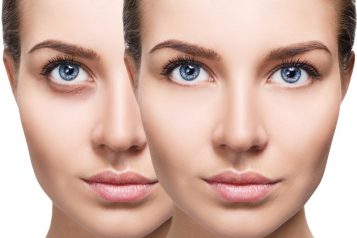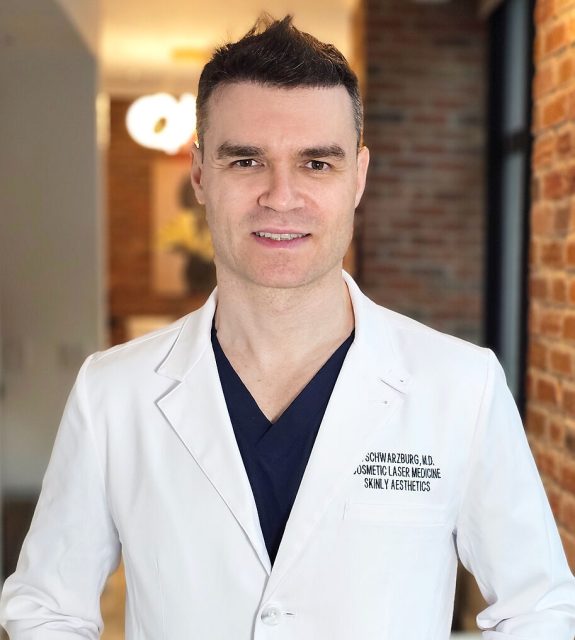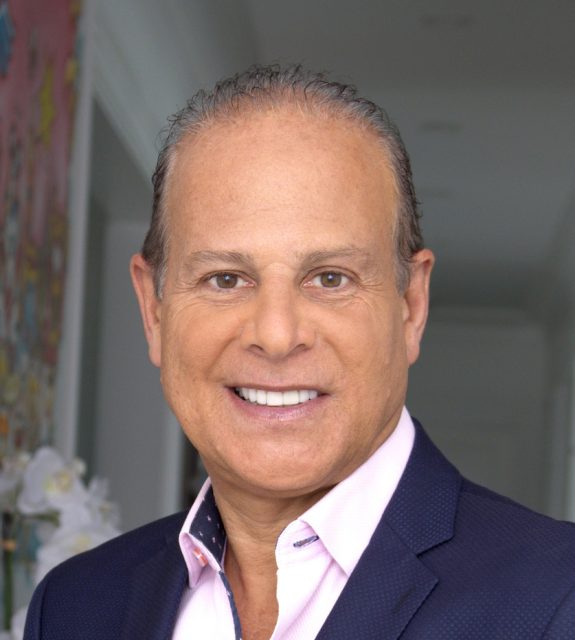 Photo Credit: Shutterstock
Photo Credit: Shutterstock
If you have extra or loose skin due to weight loss or age, there is no longer a need to go under the knife to remedy these concerns. Haute Beauty chats with Dr. Ariel Ostad about Ultherapy which has also been hailed as the "non-surgical facelift." Dr. Ariel Ostad is a Board-Certified Dermatologist with specialties in Laser, Cosmetic and Skin Cancer Surgery. He received his medical training from NYU School of Medicine, with specialty training at Harvard, NYU and UCLA.
HB: What is Ultherapy?
Ultherapy is a noninvasive ultrasound treatment used for tightening of sagging skin, reducing wrinkles and repairing collagen. It is commonly known as the ‘nonsurgical facelift’ for the effects it has on tightening the skin on the face, but it can also be used to treat sagging skin on the arms, legs, knees, thighs, chest and abdomen.
The treatment utilizes ultrasound technology to naturally strengthen the collagen in the skin and allows the doctor to target specific layers of tissue for optimal results.
HB: Do you prefer it to other methods?
I highly prefer Ultherapy to traditional facelifts for patients who are looking to avoid scarring and downtime, or prefer a more natural approach to anti-aging, as it is a fast, noninvasive procedure with no downtime. However, Ultherapy will not duplicate the results of a facelift, so I still recommend the traditional facelift to those patients who are looking for more dramatic results.
HB: Who is a good candidate?
A good candidate for Ultherapy is someone who has mild to moderate skin laxity, with the skin beginning to feel and look less firm than it once did. For example, someone might see loose skin on the neck or chin, a lowered eyebrow line or sagging under the eyes on the face. Ultherapy is also a great option to treat these concerns on the chest, if the patient is experiencing lines or wrinkles.
I encourage anyone who is interested in learning if they might be a candidate for the procedure to consult a board-certified dermatologist for a personal examination to see if Ultherapy is a fit for them.
 Photo Credit: Shutterstock
Photo Credit: Shutterstock
HB: How does the treatment work?
Ultherapy delivers ultrasound waves to targeted layers of the skin, causing the patient to feel energy pulses. Ultrasound has unique properties that allow it to bypass the surface of the skin to treat deep layers that no other non-invasive cosmetic device can reach. This process activates a natural process of new collagen formation known as neocollagenesis.
The Ultherapy procedure takes 30 to 60 minutes, depending on the patient’s preferred size of treatment area. Rather than removing skin like a traditional facelift, Ultherapy stimulates and restores deep tissue, resulting in a significant lift in the 2-3 months following the treatment.
HB: What does recovery look like?
There is no downtime associate with Ultherapy. Patients are able to resume their regular activities immediately following the treatment and do not need to follow any specific post-treatment measures.
Patients might experience some slight flushing of skin, or swelling, tingling or tenderness to the touch, but these results are all temporary and dissipate within a few hours following the procedure. Very rarely, some patients see side effects including temporary bruising or numbness on small areas of the skin, but these will also disappear very shortly.
Ultherapy treatments will bring some initial visible results, but the final results will occur in the 2-3 months following the treatment as the body’s collagen regeneration process is stimulated.
For more information, visit Dr. Ariel Ostad's social media:





















